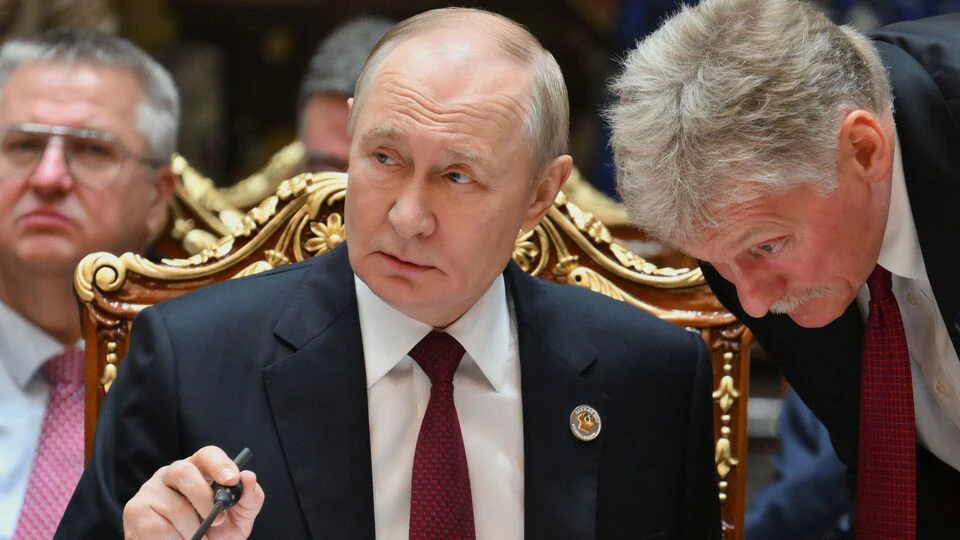that Russia was deeply concerned about the possibility of the US supplying Tomahawk cruise missiles to Ukraine.
Kremlin spokesperson Dmitry Peskov warned that the war had reached a “dramatic moment” with escalation from all sides.
“The topic of Tomahawks is of extreme concern,” Peskov told Russian state television. “Now is really a very dramatic moment in terms of the fact that tensions are escalating from all sides.”
Trump signals caution
US President Donald Trump said on Monday that before agreeing to provide Tomahawks, he would want to know Ukraine’s plans for them, emphasizing that he did not want to escalate the conflict. “I’ve sort of made a decision,” Trump added, without elaborating.
Potential threats of Tomahawks
Tomahawk missiles have a range of 2,500 km (1,550 miles), allowing Ukraine to strike deep inside Russia, including Moscow. Some retired variants can carry nuclear warheads, according to the U.S. Congressional Research Service.
Peskov highlighted the risks of such a scenario: “Just imagine: a long-range missile is launched and is flying and we know that it could be nuclear. What should the Russian Federation think? Just how should Russia react? Military experts overseas should understand this.”
Russian President Vladimir Putin earlier warned that using Tomahawks would require the direct involvement of U.S. personnel, saying that any supply would trigger a “qualitatively new stage of escalation.”
East-West tensions
Peskov framed the conflict as a “hot” confrontation with the West, the largest since the Cuban Missile Crisis of 1962. Putin portrays the war as a watershed moment in Moscow’s relations with the West, blaming NATO’s post-1991 expansion for humiliating Russia and encroaching on its perceived sphere of influence, including Ukraine and Georgia.
Ukraine and its allies, in contrast, describe the war as an imperial-style land grab and have vowed to defeat Russian forces.
Strikes on Ukraine’s power grid
Russia expressed “extreme concern” on Sunday over the potential delivery of American Tomahawk cruise missiles to Ukraine, as Moscow’s latest wave of airstrikes battered Ukraine’s power grid ahead of winter.
Power grid under siege
Ukraine’s Energy Ministry said energy facilities were struck in multiple regions – including Donetsk, Odesa, and Chernihiv – while Kyiv regional governor Mykola Kalashnyk reported that two employees of energy giant DTEK were wounded when a substation came under fire.
“Russia continues its aerial terror against our cities and communities, intensifying strikes on our energy infrastructure,” President Volodymyr Zelensky wrote on X (formerly Twitter), adding that Moscow had launched “more than 3,100 drones, 92 missiles, and around 1,360 glide bombs” over the past week.
Zelensky urges tougher oil sanctions
Zelensky called for tighter secondary sanctions targeting those who help fund Russia’s war effort through oil purchases.
“Sanctions, tariffs, and joint actions against the buyers of Russian oil – those who finance this war – must all remain on the table,” he said.
He also revealed that he had a “very positive and productive” phone call with US President Donald Trump on Saturday, during which the two leaders discussed strengthening Ukraine’s air defence.
Winter fears grow
Ukraine’s power grid has remained one of Moscow’s primary wartime targets. Prime Minister Yuliia Svyrydenko described Friday’s mass bombardment – which injured at least 20 people in Kyiv and caused widespread blackouts – as “one of the largest concentrated strikes” on Ukraine’s energy system since the war began.
Ukraine’s air force said it intercepted or jammed 103 of 118 drones launched overnight, while Russia’s defence ministry claimed it had shot down 32 Ukrainian drones over its own territory.
With winter fast approaching, officials warn that Russia’s strategy of freezing Ukraine into submission could soon intensify – even as geopolitical tensions rise over Washington’s next move.
